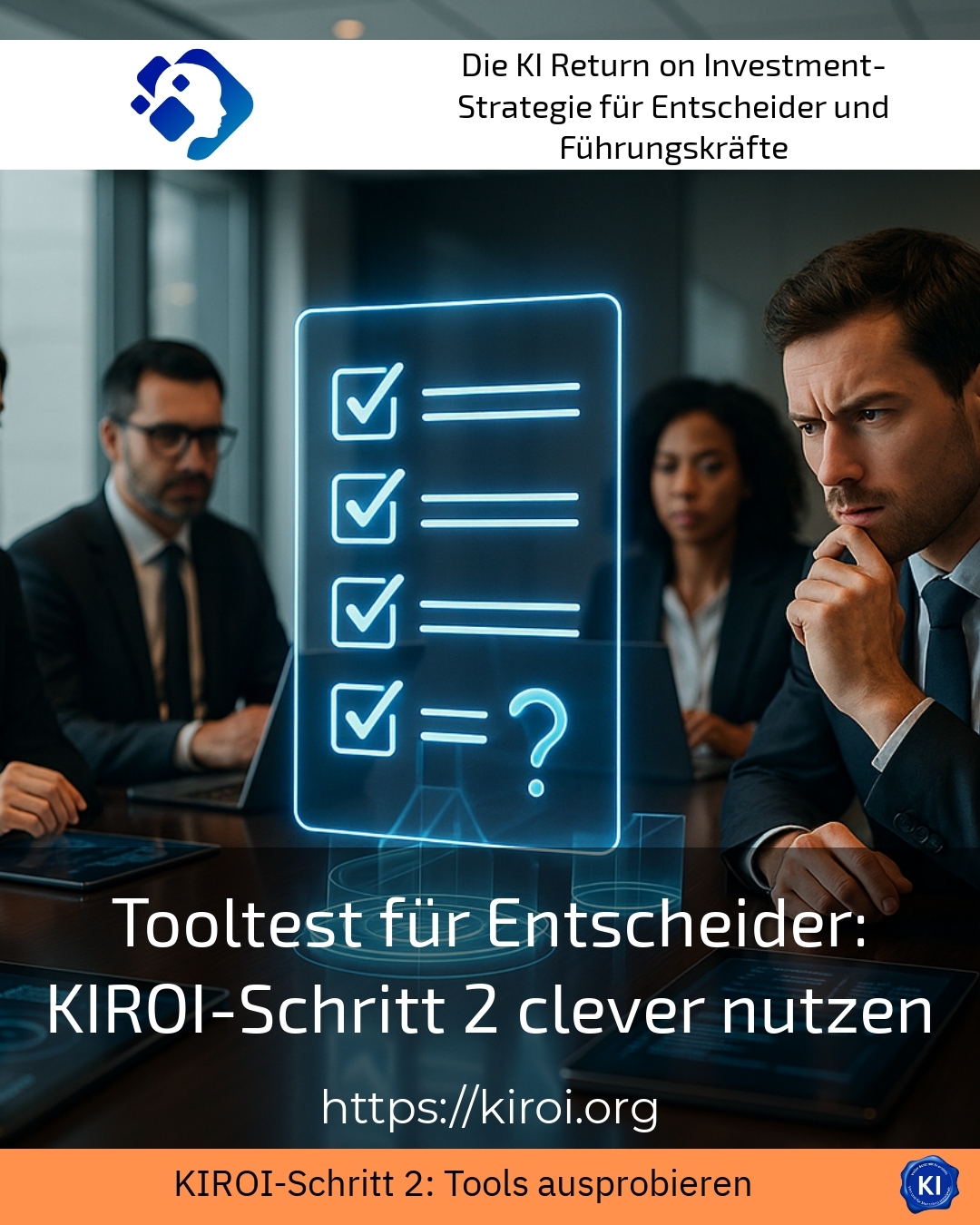An effective tool test is the key to success when selecting and implementing suitable digital tools. Tool testing is particularly important in the second step of the KIROI process, as it helps to minimise uncertainties and identify the right tools for the respective use case. In this article, we will show how decision-makers can carry out a targeted tool test in order to select the most effective software for their specific needs and thus optimise their processes.
Structured approach to tool testing
A successful tool test begins with a clear definition of the requirements and the identification of relevant stakeholders. This creates the basis for a practical test that evaluates not only technical capabilities, but also compatibility with existing systems and usability [1]. By including different perspectives, it can be ensured that the tool effectively supports everyday work [2].
An example from the manufacturing industry shows how tool tests can be used to check early warning systems for machine faults. This reduces downtimes and increases productivity and process stability [1]. In the field of office organisation, automation tools are tested for their ability to integrate seamlessly into office applications. Data protection and user-friendliness play a central role here [1].
Practical examples from various industries
In the healthcare sector, digital documentation systems are tested under real conditions in order to increase efficiency and minimise sources of error [1]. In retail, tool tests support the optimisation of e-commerce solutions in terms of performance and customer satisfaction. This allows targeted improvements to be made that boost sales in the long term [1].
BEST PRACTICE with one customer (name hidden due to NDA contract) A medium-sized consulting firm used a tool test to evaluate an AI-based analysis platform. The tool not only enabled in-depth data analyses that created competitive advantages, but also promoted acceptance within the team thanks to its intuitive operation.
Tool testing as a central element of modern decision-making processes
The tool test marks a crucial point in modern decision-making. It helps to reduce uncertainties and identify customised tools that must be convincing both technically and in terms of user-friendliness [3]. By systematically documenting the test results, the benefits of new tools can be presented transparently and acceptance within the team can be increased [2].
In logistics, for example, tool tests show how AI-supported demand forecasts and route optimisation can increase efficiency. Companies report improved utilisation of their resources thanks to more precise planning [2]. In marketing, tools for automating personalised campaigns help to increase reach and respond more specifically to customer needs [2].
The tool test as part of a comprehensive digital strategy
A tool test is not an end in itself, but a central component of a comprehensive digital strategy. It supports companies in minimising investment risks and promoting innovation in a targeted manner [3]. Coaching and external support are crucial in order to organise the process professionally and overcome uncertainties [3].
BEST PRACTICE with a regional service provider (name changed due to NDA contract) The service provider used tool tests to discover locally relevant search terms with low competition. The combination of search volumes and competitor analyses resulted in targeted content planning that significantly increased regional findability.
Systematic approach to tool testing: a coaching approach
Structured coaching during the tool test enables decision-makers to systematically define relevant criteria and make the evaluation transparent. This creates clarity in a multitude of options and ensures that the selected tools are not only technically appealing, but also practical and user-friendly [2].
BEST PRACTICE at an e-commerce company (name changed due to NDA contract) The company tested various keyword research tools to optimise product descriptions. The focus was on seasonal trends and long-tail keywords. The targeted use of the tool helped to improve the ranking and significantly increase the flow of visitors to the shop.
My analysis
A well-conducted tool test is crucial to finding the right tools for your company's success. It helps to evaluate investments sensibly and promote the acceptance of new tools within the team. By integrating a tool test into the decision-making processes, companies can optimise their processes and benefit from better results in the long term.
Further links from the text above:
– Tool testing for decision-makers: successfully utilising KIROI step 2
– Tool tests for decision-makers: How KIROI step 2 works
– Tool test for decision-makers: successfully mastering KIROI
For more information and if you have any questions, please contact Contact us or read more blog posts on the topic Artificial intelligence here.















